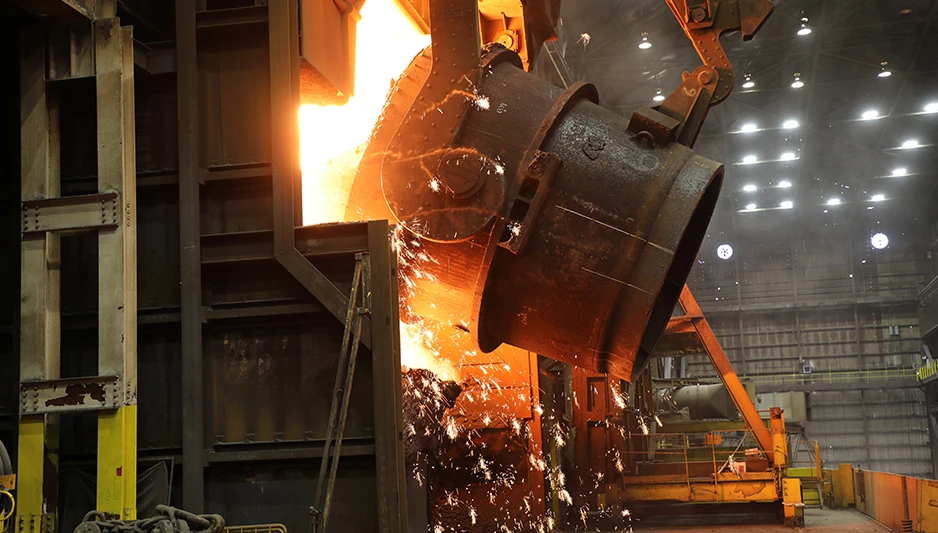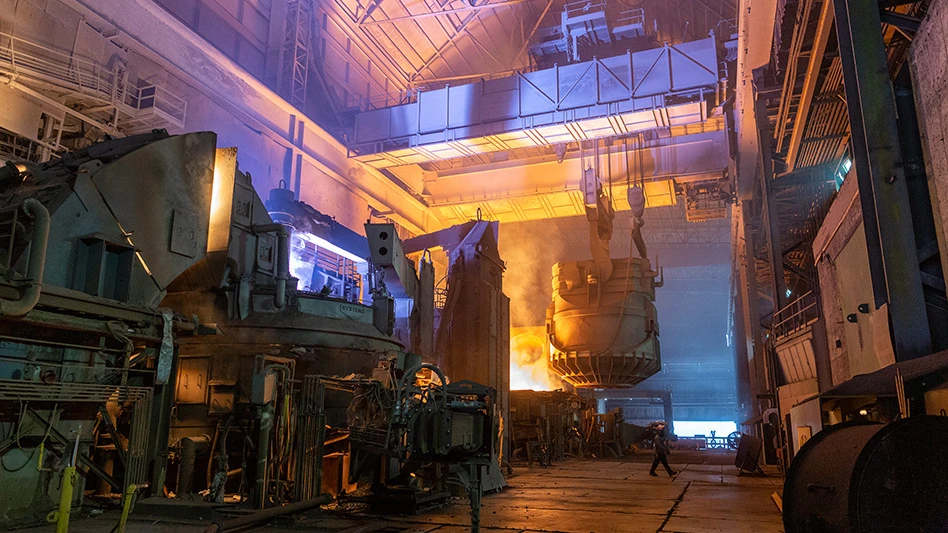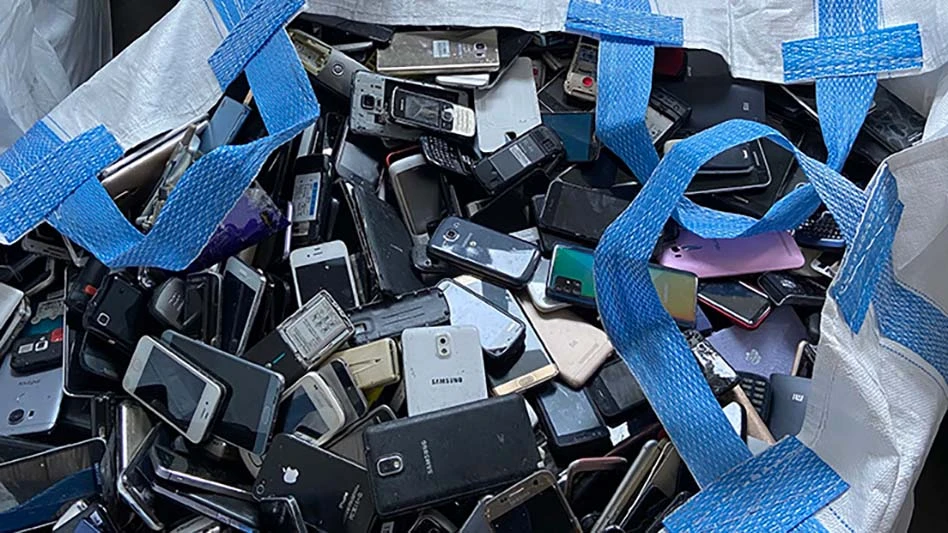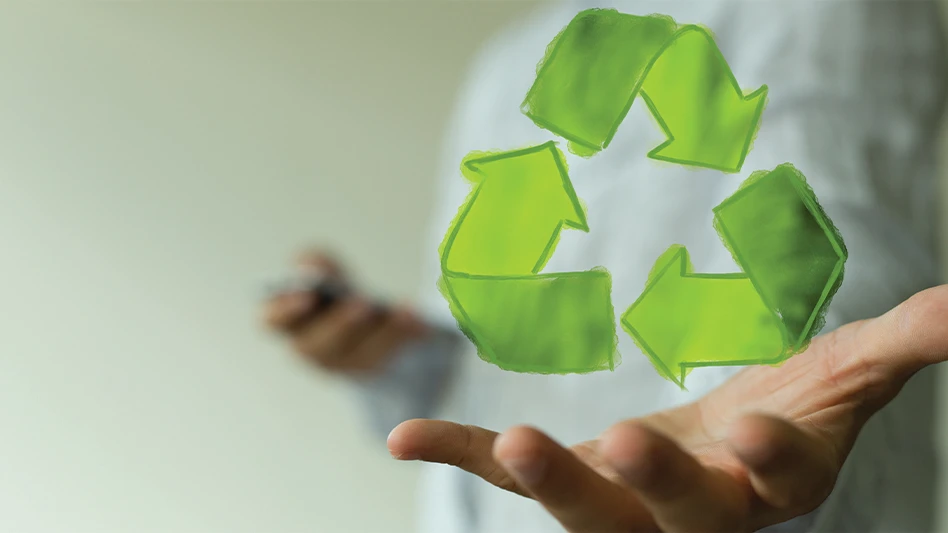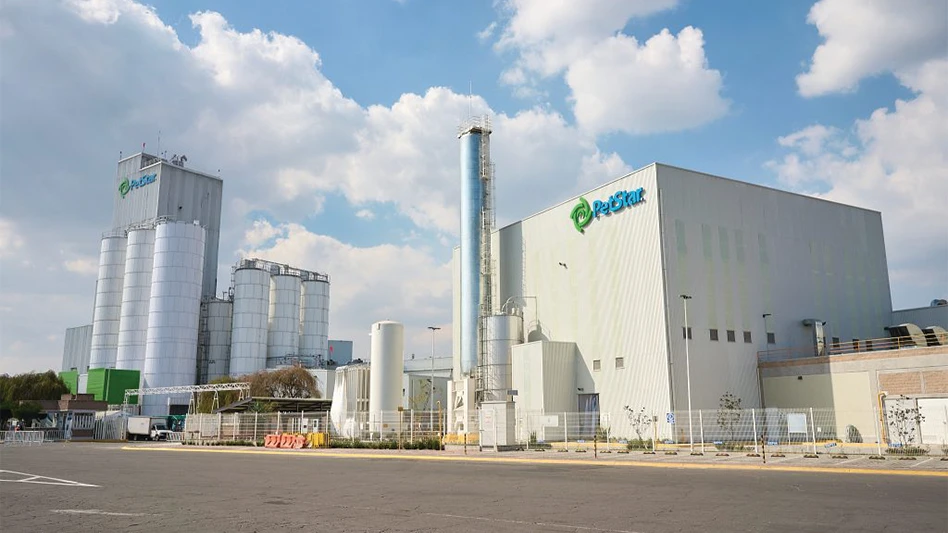Along with the trend toward commingled curbside recycling programs, glass has been making news. Unfortunately for consumers of post-consumer cullet, it’s often portrayed as the bad-guy in the single-stream story: Glass broken during commingled collections can increase residual rates and contaminate other commodities while suffering from contamination itself.
The paper recycling industry has been the loudest voice decrying the potential problems associated with single-stream collection, as glass contaminants in the paper recovered using this method are damaging to paper mill machinery.
The glass industry has also voiced concern over single-stream collection methods, as material that is otherwise usable is lost to residue through breakage.
BENEFITS
In light of glass’s higher weight relative to other curbside commodities, it helps to boost municipalities’ diversion rates, or the tonnage coming from the program. This can be especially attractive for municipalities that are trying to comply with state mandates, making the elimination of the material from recycling programs unpopular with some. (Similarly, single-stream methods also promise an increase in recovered material because residents will put more in their bins.)
The environmental benefits of glass recycling vary based on how the cullet is used. Susan Hubbard, CEO of Eureka Recycling, a non-profit recycler based in Minneapolis, Minn., points out that every ton of cullet returned to the container market saves from 1.2 to 2.8 million British thermal units compared to landfilling or incineration. "Every recycled glass bottle begins an infinite stream of additional recycling and consequently an infinite stream of avoided energy consumption and avoided environmental damage that would otherwise occur from using virgin materials and energy sources to make virgin-content glass containers to replace those glass containers that are disposed in the landfill or incinerator…or used as aggregate, landfill cover, etc," she says.
"Some waste haulers justify ‘recovery’ of glass bottles into gravel by pointing out that it reduces the demand for virgin gravel or that it augments dwindling supply," Hubbard continues.
"Gravel mining is a destructive process, but substituting glass for gravel hardly makes a dent," she says.
These environmental benefits contribute to another factor at play in some communities that decide to keep glass in their recycling programs: feeling green.
"The community keeps feeling green or greener with glass in a recycling program than without it," Harvey Gershman, president of Gershman, Brickner & Bratton Inc. (GBB). Fairfax, Va., says.
As a solid waste management consulting firm, GBB has helped public- and private-sector organizations develop recycling programs.
Despite the desire to be seen as green, as more communities turn to single-stream collection as a means for efficiently and cost-effectively collecting recyclables, glass may be chased out of the picture.
DRAWBACKS
Hubbard says the only drawbacks she can see for including glass in a municipal recycling program would be if a market does not exist for the bottles and if they are collected or handled in a way that would render them useless.
"The markets for glass and the locations of glass container manufacturers are growing fewer and fewer," Gershman says, adding that currently only one company takes green glass for remanufacturing into bottles.
Alternatives to container applications, such as using ground glass to replace aggregates, are also not well established and are lower in value, minimizing the economic benefit of recovering glass.
In developing its municipal recycling program, the Nashville, Tenn., Public Works Department, working with GBB, decided against including glass in its curbside collections because of the economics at play.
Chase Anderson of the Nashville Public Works Department says the declining price of glass influenced the city’s decision to eliminate it from curbside bins, which use commingled collections to divert everything but plastic and glass. These materials are collected at drop-off centers, where the glass is segregated by color.
"Paper is a bigger chunk of the waste stream and has a higher return value," he says. In order to lessen the contamination of the paper stream, the city decided to exclude glass from the curbside program.
| SAFE AND (FISCALLY) SOUND |
|
In addition to the economic factors associated with marketing recovered glass, one Florida community has cited safety as a concern that may lead it to eliminate the material from its drop-off programs. Hernando County, Fla., commissioners have agreed that they are not interested in keeping glass as a part of community’s drop-off recycling program, however, they have not made a final decision to eliminate the material. Jim Cargill, Hernando County recycling manager, says the primary factor in the possible elimination is a concern for the safety of workers who manually sort the glass, which is often broken when residents drop the bottles into the collection bins. "The workers wear protective clothing, but we have people getting cut on a semi-occasional basis," he says. Economics also comes into play for Hernando County, however. "Here in Florida, only one company—Strategic Materials—takes the glass," Cargill says. A driver from the county brings the material to Strategic Materials on a trip that eats up three-quarters of the day, he says. |
"We were most interested in the practically of the collection program and what was most beneficial environmentally," Anderson says of the city’s decision to remove glass from curbside bins.
Nashville sells its glass to Rivergate Recycling in Madison, Tenn., which ships it to container makers, Anderson says.
As commigled collections increase, so does the paper industry’s concern about contamination.
GBB’s Steve Stein says that the paper industry has not done enough to publicize its problems with commingled collections. "They don’t like the stuff, but they have to take it because they need the fiber." He adds, "They don’t pay differently for paper from single-stream programs."
Maintaining the quality of single-stream materials is critical to a program’s success.
"If you create a quality single stream by eliminating the major contaminant factors, you are going to have a product that the market wants," Anderson says.
| ALTERNATIVE APPROACHES |
|
In light of regional dislocations in glass cullet consumers and the effect single-stream collections are having on the quality of the glass recovered for recycling, some municipalities are investigating alternatives to the container glass market for their materials. Brain Spangler, program manager with the Montana Department of Environmental Quality, Air, Energy and Pollution Prevention Bureau, says developing a local market for the glass to save on transportation costs and the low cost of the material in traditional markets, such as Denver and Seattle, has been problematic. To address these challenges, the Business and Community Assistance Program of the Department of Environmental Quality, Air, Energy and Pollution Prevention Bureau has secured funding for a mobile glass pulverizer. “It is my program’s belief and goal that partnerships of state, tribal and local governments, private industry and non-profit organizations can move recycling forward in the state,” Spangler says. “The mobile glass pulverizer is a classic example of this concept.” Headwaters Cooperative Recycling, which includes 13 counties in Montana and a partnership with Yellowstone National Park, will operate the unit, which will be supplied by Andela Products of Richfield Springs, N.Y. Spangler says the Montana Department of Transporation’s specifications allow for glass cullet to be used in soil-aggregate filler for road construction. A pilot project is scheduled in the summer of 2005 at the Montana City interchange improvement. The processed cullet can also be used locally in landscaping, septic drain fields, drainpipe bedding and backfill and retaining wall backfill. Broward County Florida is also looking to pulverized glass to meet a local need for sand to combat beach erosion. The county is still in the testing phase, but initial results seem promising. Phil Bresee, Broward County Recycling Coordinator, says crushed glass and sand are very similar in terms of geo-technical analysis, but the county is preparing a few test pits to verify the performance of the material, which eventually would be used to augment “hot spots” on a regular basis, Bresee says. While the county plans currently to use three-color mixed glass for the project, that could change depending on the economics involved. Right now, Bresee says, the county’s clean, sorted glass is marketed to container manufactures. However, he adds that the costs to transport the material are “significant.” Bresse says, “How the economics play out is something we hope to find through this study. The project could conceivable take more material than the three mix.” |
COMPROMISES
Communities are looking at various collection methods to try to make glass recycling more viable.
Gershman says Nashville’s approach, which uses 20 drop-off centers for glass and plastic in combination with the curbside program for metal cans and paper products, offers an economical model for other cities to follow.
Hubbard says paper represents about 80 percent of the material collected in curbside recycling programs. With paper’s significant revenue generating capability and the impact of glass contamination on the stream, some communities are looking toward modified dual-stream programs that use a single bin to collect everything but the glass containers, which are placed in a second container. Seattle and Portland use such a method for their curbside programs.
St. Paul has opted for a dual-stream approach after studying all collection options, Hubbard says.
She adds, "We have a single market for the material (Anchor Glass), and they are happy to buy all that we have."
Gershman also points to dual-stream collection advancements that could benefit glass, citing the recycling program in Montgomery County, Md., which uses 64-gallon carts for mixed paper and 18- or 30-gallon bins for containers.
Gershman says the Montgomery County program is seeing the same increase in diversion as single-stream programs have, but very little residue. He adds that the overall economics comparison between the Montgomery County dual-stream program and single-stream programs looks favorable.
"The glass people and the paper people would love them to look at enhanced dual stream programs because they enhance the quantity and the quality of material recovered," Gershman says. Recyclers and consumers would support that result.
The author is managing editor of Recycling Today and can be contacted at dtoto@gie.net.

Explore the March 2005 Issue
Check out more from this issue and find your next story to read.
Latest from Recycling Today
- In memoriam: Benny McGill
- Autocar releases Smart Battery Cable to advance refuse truck fire safety
- PLASTICS launches Positives of Plastics website
- Impact Air Systems launches compact ZAC400
- PCA to shut down paper machines at Washington containerboard mill
- BMRA provides landfill guidance for UK shredder operators
- Fornnax high-capacity tire recycling plant
- EU introduces measures to secure raw materials, strengthen economic security
